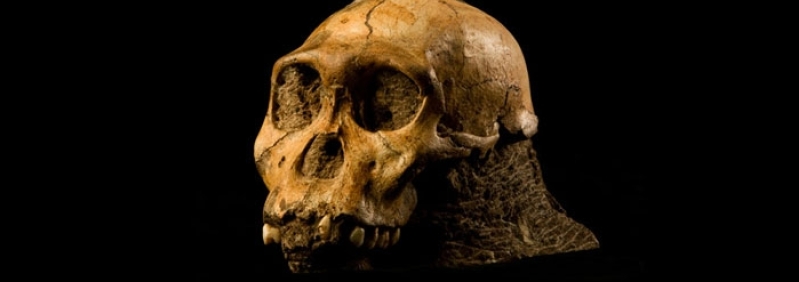
Two fossils that were discovered in South Africa nearly two years ago are causing a stir today after two articles published recently in the journal Science introduced them as members of a new species that “might help reveal the ancestor” of the genus Homo.
While some – mostly media – have been quick to hail the species as the “missing link,” many more have cast their doubts over the discovery, which some say might not even be a new species.
Some critics further say the find expands the cloud of uncertainty rather than “cast new light,” as Science claimed in its introduction of the papers.
"The origins of the genus Homo remain as murky as ever," commented Dr. Daniel E. Lieberman, professor of Human Evolutionary Biology at Harvard.
“[T]he situation seems to grow more convoluted with each newly unearthed specimen,” added Brian Thomas of the anti-evolution Institute for Creation Research.
As for the authors of the two papers, neither claim the new species, Australopithecus sediba, to be a direct ancestor of modern humans. They, like many in the science community, reject the term "missing link" as it implies a chain in evolution rather than the more widely accepted tree model.
But they do claim that “Sediba” shares more derived features with early Homo species than any other australopith species and thus might help reveal the ancestor of that genus.
"They (the fossils), ladies and gentlemen, are potentially a Rosetta stone into the past," paleo-anthropologist Lee R. Berger of South Africa’s University of Witwatersrand told reporters during a press conference last Thursday.
Two years ago, it was Berger’s then-nine-year-old son, Matthew, who first stumbled upon a piece of the first skeleton while playing with his dog in the Cradle of Humankind World Heritage Site in South Africa.
Matthew’s find led Berger and his team to uncover the rest of the skeleton and another nearby, giving them two skeletons “far more complete than the famous Lucy fossil from Ethiopia" and in "extraordinary condition," according to Berger.
"What we have found are arguably the most complete early hominid skeletons ever discovered,” he reported.
Amid all the hype, anti-evolution groups are largely, and not surprisingly, unfazed.
“This fossil has been surrounded by the standard overhype we've come to expect from those on a campaign to evangelize for Darwin,” commented Casey Luskin of the Discovery Institute, the non-profit think tank best known for its advocacy of Intelligent Design.
Furthermore, they have on their side skeptical members of the science community who are just as critical of the conclusions drawn so far – particularly those of the press – as they are.
“[T]he bones have been examined by only one group of scientists, and their interpretation may be challenged dramatically as time passes,” stated apologetics ministry Answers in Genesis, recalling how the “missing link” hype over the fossil “Ida” last year “quickly evaporated.”
“The persistent admission of overall confusion about human evolution … is the real story, tucked beneath the fanfare,” added Thomas from the Institute of Creation Research.
“[T]he fine print in the actual scientific studies reveals that each discovery only adds another layer of confusion and forces another rewrite of evolutionary history,” he stated.
Presently, Berger's team of researchers are looking to see if any proteins are preserved in one of the skeletons, which they suspect might contain the remnant of the dried brain.
If soft tissue is found, there is a slim chance the researchers could yield DNA that might unlock the genetic code for Sediba.
"We shall wait and see," said Berger.
Notably, the name "Sediba" means "fountain" or "wellspring" in the seSotho language, spoken in South Africa, and seems fitting to those who believe that the new fossils will provide a wealth of information about our human origins.
Berger and his team of scientists say the newly described fossils date between 1.95 million and 1.78 million years in age.







